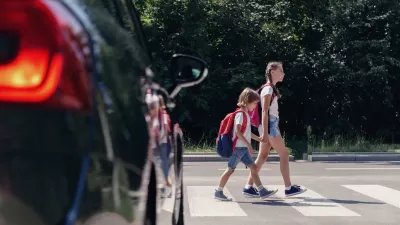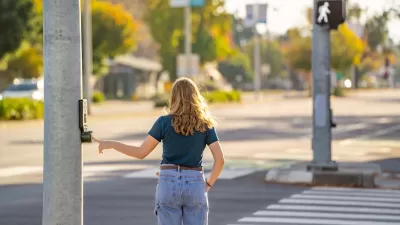Why roadways that try to serve everyone can be some of the most dangerous.

Ever heard of a ‘stroad?’ This hybrid of street and road, a thoroughfare that attempts to serve both drivers and pedestrians, is becoming known among planners and transportation engineers as a ‘worst of both worlds’ approach to road design, explains Liam Davies in a piece for The Conversation.
Stroads have an inherent conflict between their role as a movement corridor and their role as a place. While they try to be everything to everyone, they become nothing to anyone.
Davies describes Australian roads, many of which qualify as stroads and were built decades ago. Now, some Australian states are looking to a ‘movement and place’ framework to identify what role roads should play.
But, Davies writes, “To truly solve the stroad, we need to change the priority of the street. We need to remove some space given to cars (both driving and parking), and give that space to people and place.” Concepts like Complete Streets reimagine roadways with more space for people and public transit, while initiatives like parklets let residents envision alternate uses of public space.
FULL STORY: Not quite a street, not quite a road – why ‘stroads’ are disasters of urban planning, and how to fix them

Americans May Be Stuck — But Why?
Americans are moving a lot less than they once did, and that is a problem. While Yoni Applebaum, in his highly-publicized article Stuck, gets the reasons badly wrong, it's still important to ask: why are we moving so much less than before?

Using Old Oil and Gas Wells for Green Energy Storage
Penn State researchers have found that repurposing abandoned oil and gas wells for geothermal-assisted compressed-air energy storage can boost efficiency, reduce environmental risks, and support clean energy and job transitions.

Placekeeping: Setting a New Precedent for City Planners
How a preservation-based approach to redevelopment and urban design can prevent displacement and honor legacy communities.

San Francisco’s Muni Ridership Grew in 2024
The system saw its highest ridership since before the Covid-19 pandemic, but faces a severe budget shortage in the coming year.

Colorado Lawmakers Move to Protect BRT Funding
In the face of potential federal funding cuts, CDOT leaders reasserted their commitment to planned bus rapid transit projects.

Safe Streets Funding in Jeopardy
The Trump administration is specifically targeting bike infrastructure and other road safety projects in its funding cuts.
Urban Design for Planners 1: Software Tools
This six-course series explores essential urban design concepts using open source software and equips planners with the tools they need to participate fully in the urban design process.
Planning for Universal Design
Learn the tools for implementing Universal Design in planning regulations.
Heyer Gruel & Associates PA
City of Moreno Valley
Institute for Housing and Urban Development Studies (IHS)
City of Grandview
Harvard GSD Executive Education
Salt Lake City
NYU Wagner Graduate School of Public Service
City of Cambridge, Maryland





























